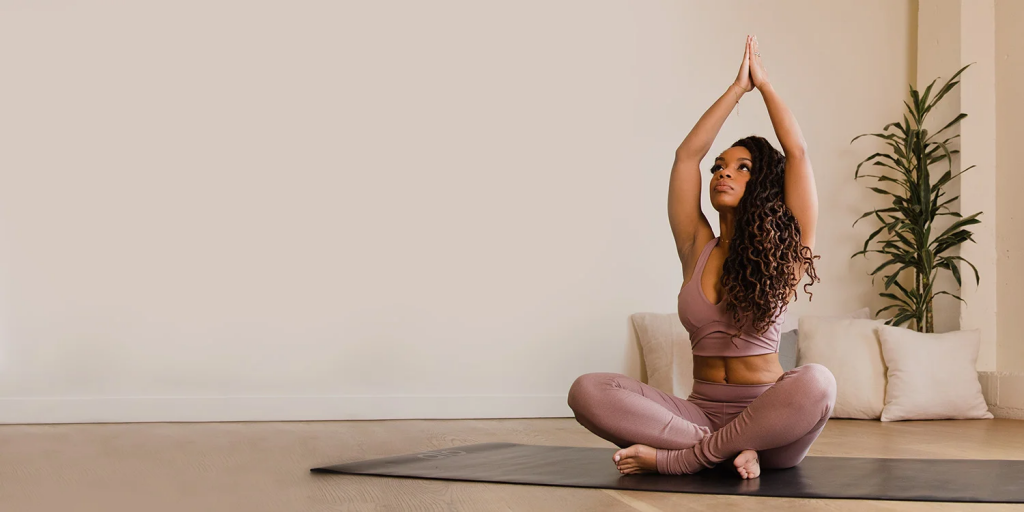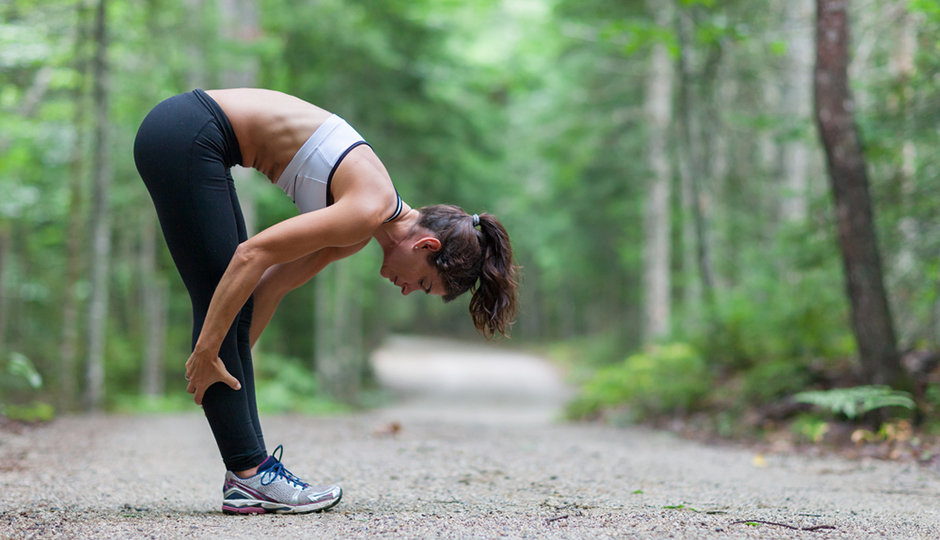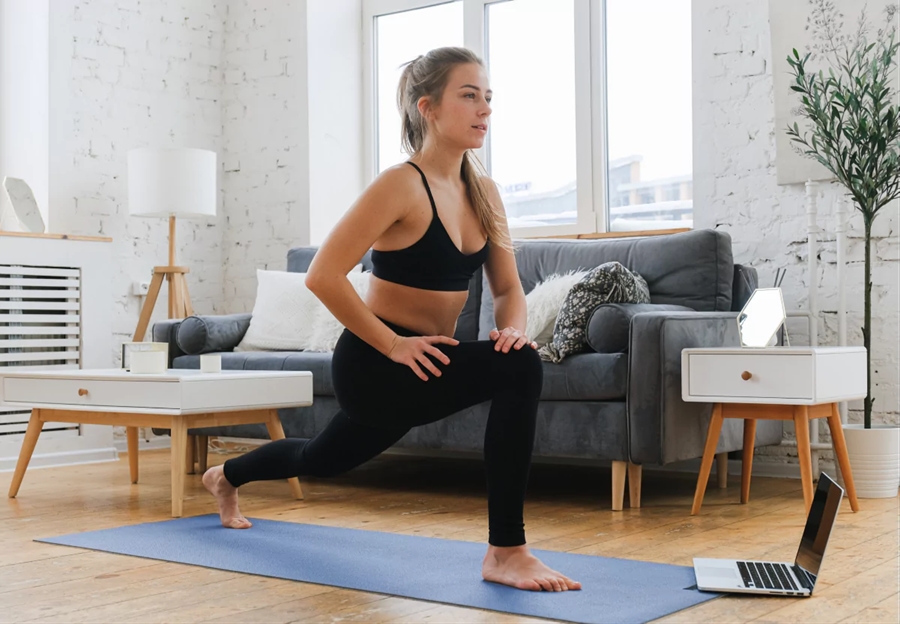
If you’re looking to sculpt your midsection, improve your posture, and enhance your overall strength—look no further than yoga for abs. Yoga isn’t just about stretching or relaxation; it’s also one of the most effective ways to develop a strong, functional core.
Unlike traditional ab workouts that isolate muscles with crunches or sit-ups, yoga engages your entire core—front, back, and sides—while also improving balance, breath control, and body awareness.
In this guide, you’ll discover how yoga builds core strength, the best poses to target your abs, and how to build a sustainable yoga practice for lasting results.
Why Yoga for Abs Works
The core is more than just your six-pack—it includes the rectus abdominis, obliques, transverse abdominis, lower back, hips, and pelvic floor. Yoga engages all these muscles through:
- Isometric holds that build endurance
- Dynamic movements that challenge coordination and control
- Balance poses that require deep core engagement
- Breath awareness that activates the diaphragm and transverse abdominis
Yoga focuses on functional strength, which means your abs are trained to stabilize your spine, protect your lower back, and improve movement in everyday life—not just look good.
Benefits of Yoga for Core Strength
Here’s what you gain from practicing yoga for abs regularly:
✅ Improved Posture
A strong core supports upright posture and relieves pressure on your spine.
✅ Better Balance and Coordination
Balance-focused poses like Boat and Side Plank engage deep stabilizers often neglected in gym routines.
✅ Reduced Risk of Injury
Strengthening the core protects your lower back and enhances movement mechanics.
✅ Enhanced Athletic Performance
Core strength powers virtually every athletic activity, from running and lifting to swimming and martial arts.
✅ Toned, Defined Abs
While yoga alone won’t “shred” your abs without proper nutrition, it contributes to lean muscle development and visible definition.
Best Yoga Poses for Abs and Stability
These yoga moves are designed to fire up your core and improve overall stability. Add them into your regular routine or build a 20–30 minute flow around them.
1. Boat Pose (Navasana)
A classic core strengthener that targets the upper and lower abs.
How to Do It:
- Sit on the floor, knees bent
- Lean back slightly and lift your feet
- Extend arms forward, parallel to the floor
- Hold for 30–60 seconds
Targets: Rectus abdominis, hip flexors, spine stabilizers
2. Plank Pose (Phalakasana)
An isometric hold that activates the entire core.
How to Do It:
- Hands under shoulders, body in one line
- Engage core, squeeze glutes, don’t sag
- Hold 30–60 seconds
Variation: Side Plank (Vasisthasana) for obliques
3. Forearm Plank with Leg Lifts
Add dynamic core engagement and balance.
How to Do It:
- From forearm plank, lift one leg at a time
- Keep hips square, controlled motion
- 10 reps per leg
Targets: Transverse abdominis, glutes, lower abs
4. Chair Pose with Twist (Parivrtta Utkatasana)
Twists ignite obliques and encourage spinal mobility.
How to Do It:
- From Chair Pose, bring palms to heart
- Twist to one side, hook elbow outside knee
- Hold for 3–5 breaths each side
Targets: Obliques, lower back, balance
5. Dolphin Plank
A shoulder and core blaster that builds full-body control.
How to Do It:
- Forearms on the mat, body in plank
- Lift hips slightly, engage abs and thighs
- Hold for 30–60 seconds
Targets: Core, shoulders, glutes
6. Locust Pose (Salabhasana)
A back-body strengthener essential for balanced core development.
How to Do It:
- Lie on stomach, lift chest, arms, and legs off the floor
- Engage glutes, keep neck neutral
- Hold for 5–10 breaths
Targets: Lower back, glutes, hamstrings
7. Bird-Dog (from Tabletop)
A functional core movement for balance and spinal alignment.
How to Do It:
- From hands and knees, extend right arm and left leg
- Hold 5 breaths, switch sides
- Repeat 3 rounds
Targets: Stabilizers, abs, back extensors
Sample 20-Minute Yoga for Abs Flow
Warm-Up (3 minutes)
- Cat-Cow
- Downward Dog
- Low Lunge
Core Sequence (15 minutes)
- Plank (1 min)
- Side Plank (30 sec each)
- Boat Pose (2 rounds of 30 sec)
- Chair Twist (30 sec each)
- Dolphin Plank (1 min)
- Locust Pose (30 sec hold, 2 rounds)
- Bird-Dog (2 rounds each side)
Cool Down (2 minutes)
- Supine Twist
- Happy Baby
- Savasana
Real-Life Case Studies
Carlos, 33 – CrossFitter Needing More Control
“I used to train only with weights and had decent muscle but poor control. Adding yoga for abs helped me strengthen deep core muscles that I didn’t even know existed. It made me stronger in lifts and reduced my lower back pain.”
Natalie, 28 – Desk Worker with Poor Posture
“Slouching all day left my abs weak and my back aching. After committing to a 10-minute yoga core flow every morning, I stood taller, my pain vanished, and my abs looked more toned in just 6 weeks.”
Eleanor, 60 – Improving Balance and Core Stability
“I wasn’t chasing six-pack abs—I wanted better balance and less back pain. Yoga taught me how to move from my core. Now I feel stronger doing everyday tasks and haven’t had a back issue in over a year.”
FAQs about Yoga for Abs
Can yoga really build abs?
Yes. Yoga builds functional core strength through isometric holds and deep muscle engagement, especially in the lower abs and obliques.
Is yoga better than crunches for core strength?
Yes. Yoga works the core in a more holistic, joint-friendly way while also improving posture, flexibility, and balance.
How often should I do yoga for abs?
Aim for 3–5 sessions per week of 15–30 minutes. Consistency matters more than intensity for results.
Can beginners do yoga for core strength?
Absolutely. Many poses can be modified with props or shorter durations. Start slow and progress gradually.
Do I need to be flexible to do yoga for abs?
No. Flexibility improves over time. Core-focused poses emphasize strength and alignment more than deep stretching.
Will yoga for abs help with back pain?
Yes. A stronger core reduces pressure on the spine and supports better posture, both of which relieve back tension.
Do I need equipment for yoga abs workouts?
Just a yoga mat. Optional props like blocks or a strap can enhance comfort or support alignment.
How long until I see results?
Most people feel stronger within 2–3 weeks and notice visible core definition and posture improvements by 4–6 weeks with consistent practice.
Conclusion: Build a Strong, Stable Core with Yoga
Whether you’re looking for toned abs, better posture, or stronger back support, yoga for abs offers a sustainable, balanced approach. These poses challenge your core without straining your spine, making them ideal for long-term strength and stability.
You don’t need crunches, gym machines, or endless reps. All you need is your body, your breath, and a mat.
Ready to strengthen from the inside out?
Try this yoga for abs sequence today—and feel the difference where it matters most: your center.








